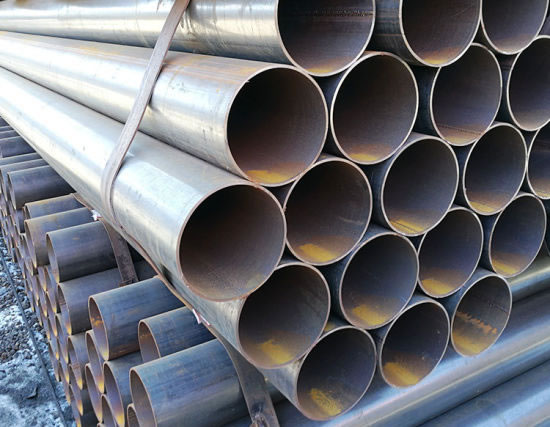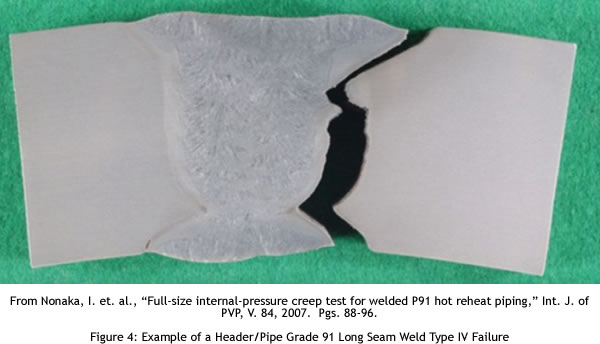Grade 91 Steel – How Did We Get Here? Part 2

Part 2: Type IV Cracking and Inspectability
The current concerns with Grade 91 are fundamentally and firmly rooted in inspectability of Type IV damage; while sensitivity of the material can be managed (see for example [1]), Type IV cracking is perhaps the Achilles heel of Grade 91. At a high level, the thermal cycle(s) due to welding will create a thin band of material in the heat affected zone (HAZ) with properties much closer to Grade 9 than Grade 91. While full re-normalization and tempering of the entire component after welding can greatly improve the situation, simple (subcritical) post-weld heat treatment (PWHT) does not. Damage is overwhelmingly concentrated in this thin band of material during high temperature operation, such that when failure finally occurs, it has an almost brittle appearance since there has been little if any creep deformation or damage outside of the HAZ (see Figure 3 for example). Since the failure is in the HAZ, the “cracking” is referred to as Type IV. If the Type IV zone is in a region of decaying stress (such as with a header stub weld), the result is a (detectable) surface crack. If the weld is subject to a uniform stress through thickness, such as with a high energy piping long seam weld, the result would more likely be that shown in Figure 4 [2].
The standard way component life is managed is of course through periodic inspection, and mitigation of Type IV failure risk was focused for many years on inspection technology. However, in 2014, a major multiyear inspection program aimed at Type IV damage detection concluded that there was no available technology close to detecting the fine and uniformly dispersed voids characteristic of the Type IV zone prior to 90-95% of component life, which remains, even several years later, the conclusion today [3]. This, more than anything else raised extremely serious concerns throughout industry as to whether Grade 91 (and any CSEF) could be safely used if catastrophic failure can occur without warning.
The key is that catastrophic failure requires an essentially uniform stress state through-thickness, with the dominant stress oriented transverse to the HAZ. For all practical purposes, and more importantly from a personnel safety perspective, this essentially only occurs in long seam welded main steam piping. Put simply, high temperature Grade 91 long seam welded piping should not be used. For other details, which have undeniably suffered reliability issues, reinforcement (lower stress) and weld joint design and orientation can be manipulated to give satisfactory performance; for something as simple as a pipe, there is little such opportunity without potentially exotic and costly solutions from a new fabrication perspective.
As documented in [3], the potential steps to deal with this lack of inspectability are extensive and add significant effort and cost to an already difficult material. Recent EPRI work has led to a controlled chemistry recommendation which should give more consistent creep life (an important contribution), but should not be confused with a Type IV damage or inspection solution (which the concluding remarks in [3] affirm).


References
- https://www.epri.com/#/pages/product/3002006390/?lang=en
- Nonaka, I. et. al., “Full-size internal-pressure creep test for welded P91 hot reheat piping,” Int. J. of PVP, V. 84, 2007. 88-96.
- EPRI Report 3002012262, “Integrated Life Management of Grade 91 Steel Components: A Summary of Research Supporting the Electric Power Research Institute’s Well-Engineered Approach,” Electric Power Research Institute. May 2018.





